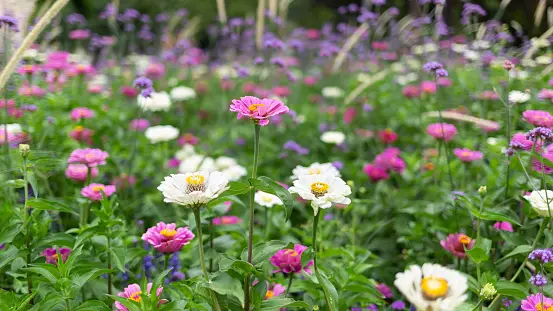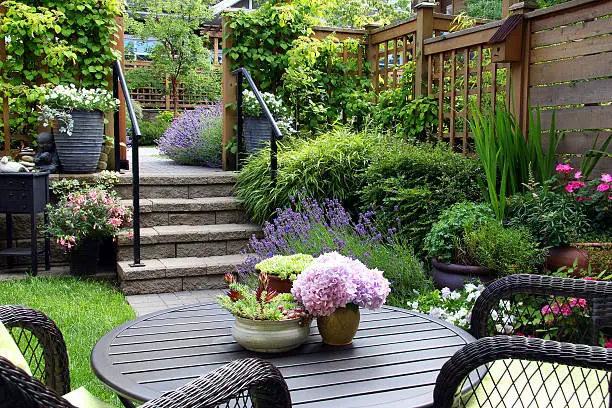Learn about how to manage crop diseases in your garden and how you can deal with that to flourish your garden plants.
Conquering the Foes: A Kenyan Guide to Managing Common Crop Diseases in Your Home Garden
Kenya's fertile soil and warm climate are ideal for cultivating a thriving home garden. However, even the most enthusiastic gardener can face challenges. Common crop diseases can threaten the health and productivity of your precious plants. But fear not! By understanding these diseases and implementing effective control strategies, you can keep your garden flourishing.
This comprehensive guide explores common crop diseases encountered by Kenyan home gardeners, along with organic and conventional control methods.
Building a Strong Defense: Preventive Measures
The best defense against crop diseases is a healthy garden. Here are some proactive measures to take:
- Choose Disease-Resistant Varieties: Many vegetable and herb varieties are bred to be resistant to specific diseases. Research and select varieties that thrive in your Kenyan climate and offer built-in disease resistance.
- Practice Crop Rotation: Planting the same crops in the same location year after year can increase the risk of disease build-up in the soil. Rotate your crops by planting different vegetable families in the same bed each season.
- Proper Plant Spacing: Overcrowding plants can restrict airflow, creating a moist environment ideal for fungal diseases. Follow recommended spacing guidelines for your chosen vegetables and herbs to ensure proper air circulation.
- Sanitation and Hygiene: Cleanliness is key! Remove and destroy diseased plant parts to prevent the spread of pathogens. Regularly clean your gardening tools with a disinfectant solution to prevent the transfer of diseases between plants.
- Promote Soil Health: Healthy soil fosters strong, resilient plants better equipped to resist disease. Enrich your soil with organic matter like compost or composted manure to improve its structure, drainage, and microbial activity.
Recognizing the Enemy: Common Crop Diseases in Kenya
Here's a breakdown of some frequently encountered crop diseases in Kenyan home gardens, along with identification tips and control methods:
-
Fungal Diseases:
-
Powdery Mildew: This white, powdery fungal growth appears on leaves and stems, stunting plant growth and reducing yields. It thrives in cool, humid conditions.
- Identification: Look for white to grayish powdery patches on the upper surfaces of leaves and stems. Affected leaves may become distorted and stunted.
-
- Organic Control: Improve air circulation by thinning overcrowded plants and pruning for better light penetration. Apply a solution of baking soda (1 tablespoon per gallon of water) or neem oil spray (follow label instructions) to affected areas.
-
- Conventional Control: Fungicides containing sulfur or copper can be effective against powdery mildew. However, always use these products as a last resort and strictly follow label directions.
-
Powdery Mildew: This white, powdery fungal growth appears on leaves and stems, stunting plant growth and reducing yields. It thrives in cool, humid conditions.
-
-
Downy Mildew: This fungal disease causes yellowing and curling of leaves, with a fuzzy white or grayish mold appearing on the undersides. It thrives in cool, moist weather.
- Identification: Look for yellowing and cupping of leaves, with a downy white or grayish mold growth on the undersides.
-
- Organic Control: Similar to powdery mildew, improve air circulation and apply organic fungicides like neem oil spray or a solution of potassium bicarbonate (1 tablespoon per gallon of water).
-
- Conventional Control: Fungicides containing copper or chlorothalonil can be effective against downy mildew. Always follow label instructions for application and safety precautions.
-
Downy Mildew: This fungal disease causes yellowing and curling of leaves, with a fuzzy white or grayish mold appearing on the undersides. It thrives in cool, moist weather.
-
-
Early Blight: This fungal disease causes brown or black spots on leaves, stems, and fruits. It thrives in warm, humid weather with frequent rainfall.
- Identification: Look for circular brown or black spots on leaves, stems, and fruits. Affected leaves may turn yellow and drop prematurely.
-
- Organic Control: Rotate crops, remove and destroy infected plant parts, and water plants at the base to avoid wetting the foliage. Apply organic fungicides like neem oil spray or a copper fungicide solution according to label instructions.
-
- Conventional Control: Fungicides containing chlorothalonil or mancozeb can be effective against early blight. Always prioritize organic methods and use conventional fungicides only as a last resort, following all safety precautions.
-
Early Blight: This fungal disease causes brown or black spots on leaves, stems, and fruits. It thrives in warm, humid weather with frequent rainfall.
-
Bacterial Diseases:
-
Bacterial Spot: This bacterial disease causes small, water-soaked spots on leaves, stems, and fruits. These spots may enlarge and turn brown or black.
- Identification: Look for small, water-soaked spots on leaves, stems, and fruits that may become brown or black and scabby.
-
- Organic Control: Practice crop rotation, remove and destroy infected plant debris, and water plants at the base to avoid wetting the foliage. A copper bactericide spray may be used as a preventative measure.
-
- Conventional Control: Antibiotic sprays are not typically recommended for home gardens due to potential resistance development. Focus on preventive measures and organic controls.
-
Bacterial Spot: This bacterial disease causes small, water-soaked spots on leaves, stems, and fruits. These spots may enlarge and turn brown or black.
The best Disease Resistant for Any Garden in Kenya
A vibrant garden is a feast for the senses, offering a haven for pollinators, a source of fresh produce, and a calming space for relaxation. But even the most idyllic garden can be threatened by disease. Fungal infections, bacterial invasions, and viral onslaughts can take a toll on your precious plants, leaving them weakened, unproductive, and visually unappealing.
The good news? You don't have to surrender to the forces of plant pathology! By incorporating disease-resistant plants into your garden design, you can create a beautiful and resilient landscape that requires less intervention and chemical treatments.
This guide explores the concept of disease resistance in plants and highlights some of the best disease-resistant options for various garden categories.
Understanding Disease Resistance
Plants, like humans, have built-in defense mechanisms to fight off disease. These mechanisms can include physical barriers like waxy coatings on leaves, or the production of natural chemicals that deter or inhibit pathogens. Plant breeders have capitalized on these natural defenses by selecting and breeding varieties with enhanced resistance to specific diseases.
Here are some of the benefits of choosing disease-resistant plants:
- Reduced Need for Pesticides: Less reliance on chemical controls translates to a healthier environment for you, your family, and beneficial insects.
- Lower Maintenance: Disease-resistant plants require less monitoring and intervention, freeing up your time and resources for other gardening tasks.
- Increased Plant Vigor: Plants resistant to disease tend to be healthier overall, leading to better growth, higher yields, and a more aesthetically pleasing garden.
- Reduced Stress on Gardeners: Watching your beloved plants succumb to disease can be disheartening. Disease-resistant varieties offer peace of mind and a higher chance of gardening success.
Disease-Resistant Champions: Building Your Resilient Garden
Now that you understand the advantages of disease-resistant plants, let's explore some fantastic options for various garden features:
-
Flowers:
- Roses: Traditionally known for their susceptibility to black spot and powdery mildew, disease-resistant rose varieties like 'Knock Out' series, 'Carefree' series, and 'Meilland Richardier' roses offer stunning blooms with minimal maintenance.
-
- Zinnias: These cheerful annuals are naturally resistant to many diseases and thrive in hot, sunny locations. Zinnias come in a vibrant range of colors and attract butterflies and beneficial insects.
-
- Coneflowers: Echinacea varieties offer beautiful daisy-like flowers and boast strong resistance to powdery mildew and fungal diseases. They are a favorite among pollinators and add a touch of prairie charm to your garden.
-
- Impatiens: New Guinea impatiens are a significant improvement over traditional impatiens, offering resistance to downy mildew, a disease that plagued older varieties. New Guinea impatiens are shade-tolerant and come in a wide range of vibrant colors.
-
Vegetables:
- Tomatoes: Tomato varieties like 'Celebrity', 'Big Boy', and 'Sun Gold' offer resistance to diseases like early blight and verticillium wilt. These varieties produce delicious fruit and are well-suited for most home gardens.
-
- Peppers: Bell pepper varieties like 'California Wonder' and 'Sweet Banana' are known for their resistance to bacterial spot and fungal diseases. Peppers add a touch of heat or sweetness to your culinary creations.
-
- Cucumbers: Disease-resistant cucumber varieties like 'Bush Champion' and 'Slicemaster' offer excellent yields and resistance to powdery mildew and downy mildew. Cucumbers are perfect for salads, dips, and refreshing summer drinks.
-
- Lettuce: Varieties like 'Red Romaine' and 'Salad Bowl' are resistant to common lettuce diseases like downy mildew and botrytis. Lettuce is a versatile salad green that thrives in cooler temperatures.
-
Herbs:
- Rosemary: This fragrant herb is naturally resistant to most diseases and adds a touch of Mediterranean flair to your garden. Rosemary is perfect for grilling, roasting, and stews.
-
- Oregano: This versatile herb is known for its resistance to fungal diseases and adds a robust flavor to pizzas, pastas, and tomato sauces.
-
- Thyme: Thriving in sunny locations, thyme is a low-maintenance herb with strong disease resistance. It adds a delightful flavor to meats, stews, and stuffings.
-
- Mint: While known for its aggressive growth habit, certain mint varieties like 'Chocolate Mint' and 'Apple Mint' offer some disease resistance and can be contained in pots to prevent them from taking over your garden.
Conclusion
Building a thriving garden doesn't have to be a constant battle against disease. By incorporating disease-resistant plants, practicing preventive measures, and maintaining good garden hygiene, you can create a flourishing oasis that requires less intervention and chemical treatments.
Remember, disease resistance is just one piece of the puzzle. Choose varieties suited to your climate and growing conditions, provide adequate sunlight and water, and nurture your plants with healthy soil. By combining these strategies, you can cultivate a beautiful, resilient garden that rewards you with vibrant blooms, delicious harvests, and the satisfaction of a healthy ecosystem.
So, embrace the concept of disease-resistant plants. Research varieties that thrive in your region, prioritize organic control methods whenever possible, and celebrate the joy of a thriving, low-maintenance garden. With a little planning and knowledge, you can cultivate a garden that not only looks stunning but also fights off disease naturally, leaving you with more time to savor the beauty and bounty it offers. Happy gardening!








.webp?locale=en)

















